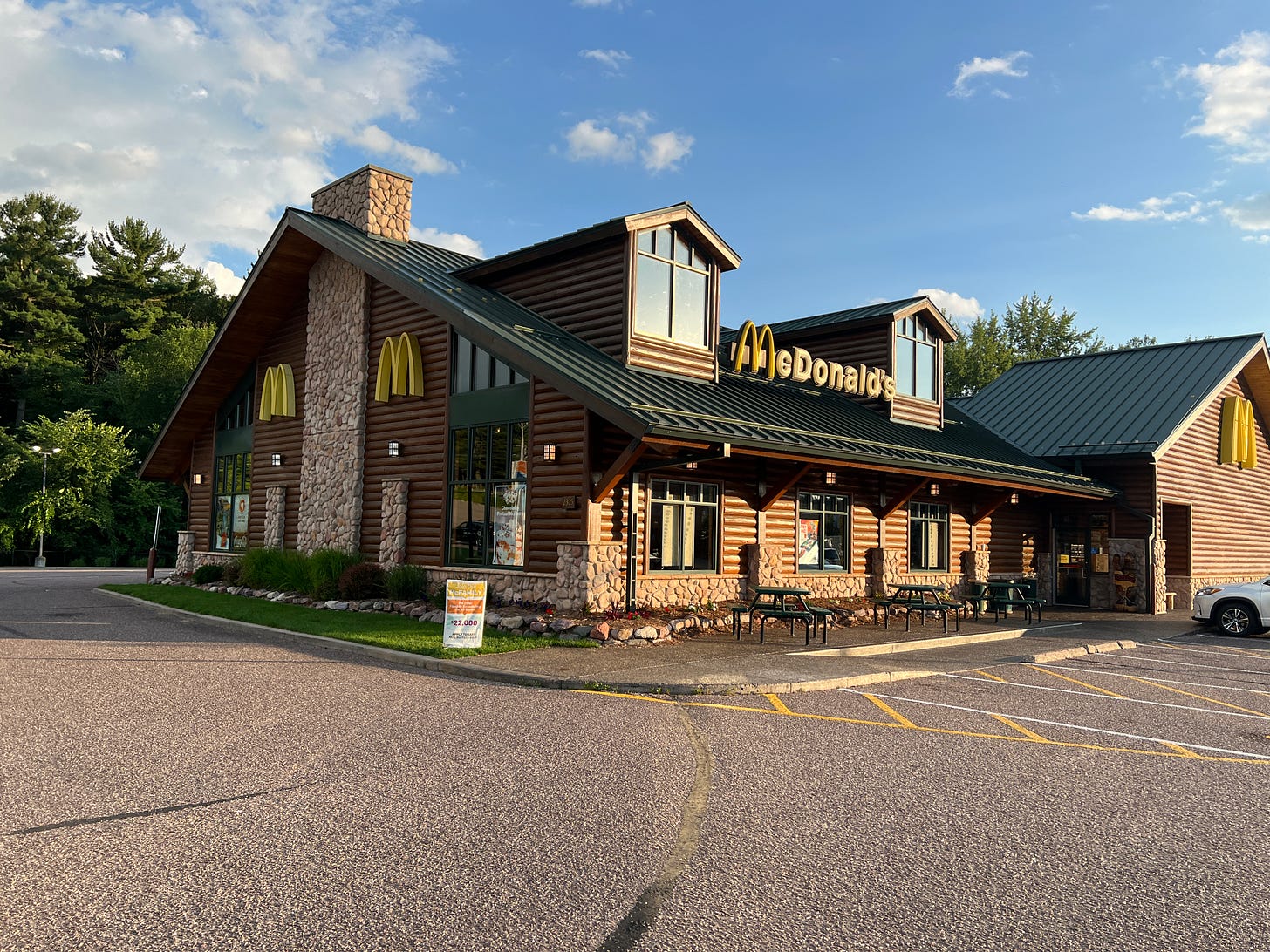I'm Lovin' It: The story of the gigantic log cabin McDonald's in Wisconsin Dells
There's no McDonald's quite like this McDonald's, one to add to your nostalgia travel bucket list.

You may have seen the article making the rounds. Architectural Digest published a piece last month showcasing what it calls the world’s most beautiful McDonald’s.
The author seemed a little sheepish about putting the words “beautiful” and “McDonald’s” next to each other. I can understand that hesitation, but only so much. Like a lot of you, I see beauty in even quotidian McDonald’s, like the almost extinguished McDonald’s mansards.
Those buildings in their day were an attempt by the fast-food chain to evoke feelings of home and coziness, moving away from the roadside buildings of plate glass, tile and neon that preceded them. Starting with the first mansards in the late 1960s, McDonald’s was trying to fit in downtown, with brick walls and a roofline echoing that of old Victorian homes. (Apologies to François Mansart.)
They aspired to be sit-down restaurants, not just walk-ups. Fast food could be enjoyed here a little more slowly, even if the fluorescent lighting and hard plastic seating didn’t encourage lingering.
McDonald’s, for all its uniformity, also began to explore the introduction of subtle differences inside stores. Many shops leaned into deploying local iconography, culture and history in their decorations, and there were even different building formats, like the Town House in urban centers.
What’s more, McDonald’s in the 1970s began to insert itself artfully into existing, often elegant buildings. Or they’d build new structures that reflected regional customs and traditions, in part as a way to win over local communities and resistant zoning boards. And it’s those kinds of McDonald’s that are celebrated in the Architectural Digest article.
Indeed, there has long been a cultural fascination with unconventional McDonald’s, ones that deviate from the mansard or now, I suppose, the box. Consider the popularity of the Twitter account Nonstandard McDonald’s, which sadly appears to be on hiatus.
Inspired by this Architectural Digest story, which many followers and friends shared with me, I’ll be discussing some of my own favorite McDonald’s in periodic posts here on The Retrologist newsletter.
I’ll start with my photos and a discussion of one of the locations featured in the Architectural Digest article — the Wisconsin Dells store, known as the Fort Dells McDonald’s for reasons I will soon explain.
This McDonald’s fits so very well into the sylvan environs of Wisconsin Dells that it’s easy to miss what it actually is.
The Fort Dells McDonald’s opened in June 2002, making this lodge just shy of 21 years old, having lasted almost as long as the famed complex that preceded
Keep reading with a 7-day free trial
Subscribe to The Retrologist by Rolando Pujol to keep reading this post and get 7 days of free access to the full post archives.




